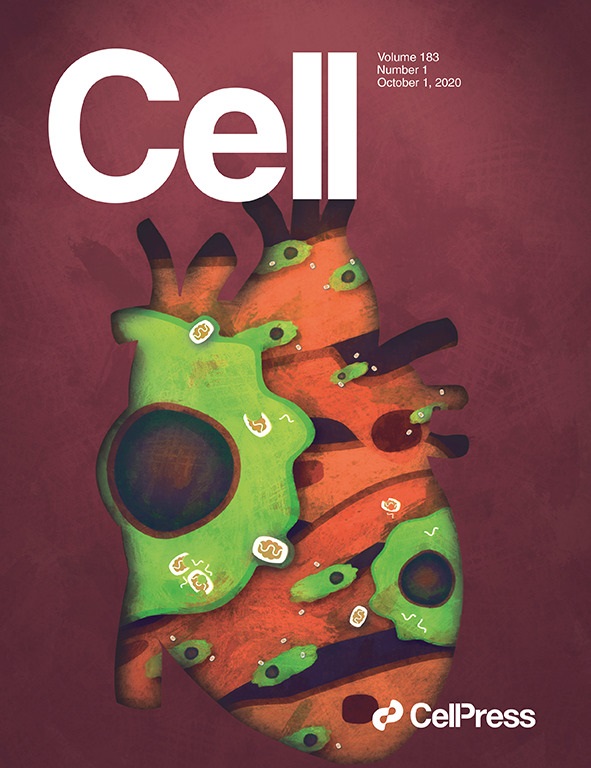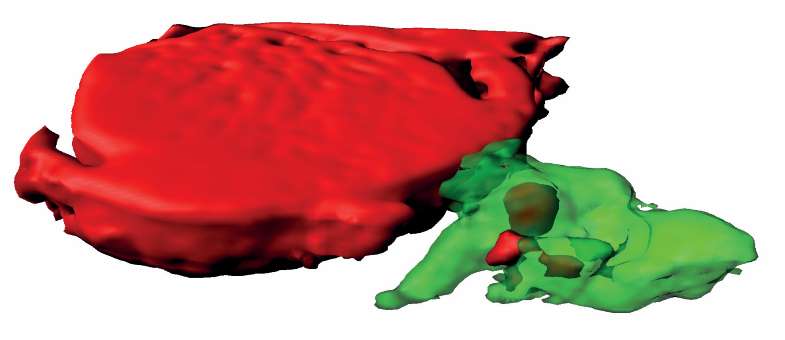Cell: CNIC researchers discover a cell-cleaning system that keeps hearts healthy
The study published in Cell shows that macrophages, a type of immune cell, help cardiac cells to get rid of their waste material, and that this maintains the metabolic and contractile properties of the heart
Researchers of the Centro Nacional de Investigaciones Cardiovasculares (CNIC) have discovered a cell-cleaning system that is key to keeping a healthy heart. This mechanism allows the heart's contractile cells (the cardiomyocytes) to release damaged components outside the cell into particles called exophers. These exophers are then taken up by a network of immune cells living inside the heart-the macrophages, which are in charge of removing them before they cause inflammation in the heart.
The study is published in Cell, through collaboration of two groups at CNIC-led by Dr. Andrés Hidalgo and Dr. José Antonio Enríquez- compiles the results of over five years of research, with collaborations with laboratories in Europe, Asia and the US. The insights that this study provides suggests that cardiac dysfunction can emerge in some instances from defects in resident immune cells, rather than from cardiomyocytes. This finding has important implications for the diagnosis and treatment of heart disease.
The assumption so far was that most cells could dispose of, or recycle, their waste products on their own. However, the CNIC teams discovered that in the heart this process requires the close collaboration of two types of cells, such that the material is transferred from cardiomyocytes to neighboring macrophages, which are ultimately responsible for disposing of the waste.
“Macrophages are cells with high phagocytic capacity and their functions have been mostly studied in inflammation and disease. However, we now know that they are also part of most healthy tissues and that they play pivotal tasks in their daily functions,” explained Dr. José Ángel Nicolás-Ávila, first author of the article and researcher at CNIC.
These cells were first described in the heart only a decade ago, and we are just beginning to understand what it is that they do. The finding that cardiomyocytes surrogate the removal of their waste to macrophages has many implications. “The fact that the heart requires a population of macrophages to do their cleaning work, among other tasks, suggests that many heart diseases of unknown origin can be explained by failure of these macrophages.” Dr. Enriquez says.
The discovery suggests that cardiac dysfunction may, in some cases, arise from defects in immune cells, rather than from cardiomyocytes
Another potential implication pointed out by Dr. Nicolás-Ávila, is that there may be similar processes supporting the fitness of specialized cells in other tissues, including the brain, whose cells share features with cardiomyocytes. “We are currently exploring if phenomena like the ones found in hearts can take place in other organs, and whether they degenerate with age”, he says.
Dr. Ana Victoria Lechuga Vieco, co-first author of the article, adds, “cardiomyocytes are cells with extremely high energy demands. The heart needs to beat uninterruptedly to keep the body alive, which explains why cardiomyocytes are full of mitochondria, the organelles that produce energy. Similar to a boiler, the mitochondria suffer wear-and-tear with use and need to be replaced to prevent cell damage. The most striking finding from our study -she notes- is that cardiomyocytes pass this task on to macrophages, possibly because cardiomyocytes are too busy beating and cannot process all this waste material on their own.”
Each cardiomyocyte is invaluable, because they cannot proliferate or be replaced once they die. “This is why we believe that this 'surrogation' phenomenon has evolved to allow cardiomyocytes to beat in optimal conditions for many years, with macrophages helping with their maintenance,” says Dr. Hidalgo. “In a way, this is like the cleaning system of a city. It lacks glamour, but is essential for the whole city to function.” he sums up.

Cell magazine has selected an image on its cover an artistic representation of a mammalian heart surrounded by macrophages engaged in clearing damaged mitochondria and other debris from surrounding cardiomyocytes to preserve heart function, emphasizing the prevalence of macrophages in the heart, their intimate interaction with cardiac cells, and their importance for preserving heart function. Image credit: @Juan Manuel García.











